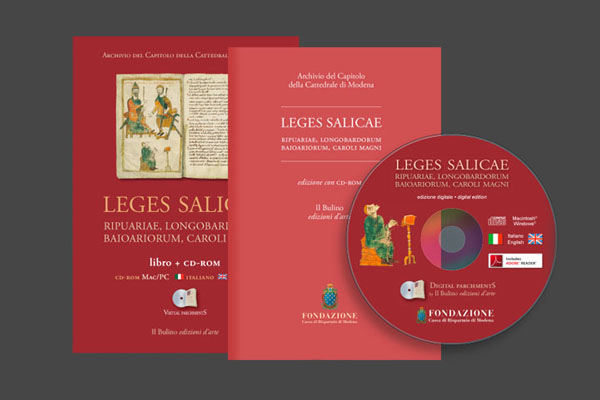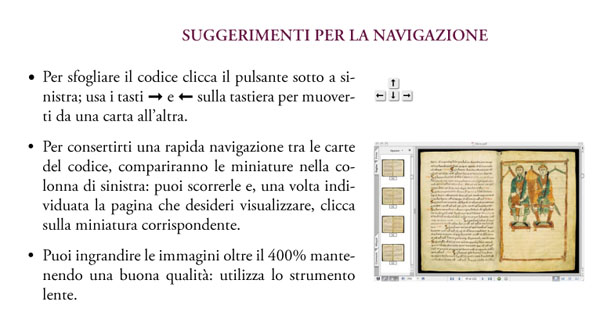    
|

    Book cm 13x19, 64 pages, ill. col. in Italian. CD-rom Italian/English ISBN 978-88-86251-78-5 |
LEGES SALICAE book (Italian) & CD-rom (Italian/English) |
|||

|
Read Index (PDF format) |
|||
|
The edition includes an elegant small book with colour illustrations, 64 pages, size cm 13×19 and a CD rom with the digital high resolution reproduction of the whole manuscript. This ancient book includes only few pictures, but first of it represents a milestone in jurisprudence. You can download a sample of the CD-rom including the intro and some resized pictures: link Among the best-known — at international level — and most important manuscripts held at the Capitular Archive of Modena, is the manuscript O.I.2 containing the texts of Lombard, Salic, Ripuarian and Bavarian laws, together with certain Carolingian manuscripts issued by Charlemagne and his descendents, Pepin, Lothar I and Louis II.
CD-rom ITALIAN and ENGLISHIt is a manuscript on parchment of 216 folios (432 pages) in 19 × 28 cm format, bound in wooden boards covered in leather, and dating back to the 9th-10th centuries. It collects — in a corpus or liber legum — many of the national or popular barbarian laws in force among the gentes brought together under the Carolingian Empire. It therefore represents a monument and document of rare importance, and provides extraordinary evidence of that fundamental historic period which began between the 8th and 9th centuries with a renewed Empire (Carolingian and Western), the genesis of Europe and the cultural and political role of Italy in the construction of a legal system in Europe. The Lex salica is one of the most ancient documents of Germanic customary law. Written in Latin, this long text is essentially a penal code which determines the pecuniary sanctions for various crimes depending on the various cases and in consideration of the nature and entity of the damage, the manner this was carried out and the deliberateness. The trials and other juristic acts are formally regulated and carried out by way of solemn and symbolic deeds. In the height of the Middle Ages even bishops exercised functions of a public nature, such as the administration of justice; and we can assume that this is the reason for the presence of this famous manuscript in the Capitulary Archive of Modena. Drawn up as a Pactus ever since the 5th century, the Lex salica was amended and integrated by Charlemagne and by his successors, and was widely enforced in the Empire and in Italy. It was from this set of laws — particularly that which excluded women from the inheritance of freehold (‘allodial’) property — that the principle of excluding women from succession to the throne was derived. The law was abolished in 1713 with the Pragmatic Sanction to allow the ascent of Maria Theresa of Austria to the Hapsburg Imperial throne. 
|
||||